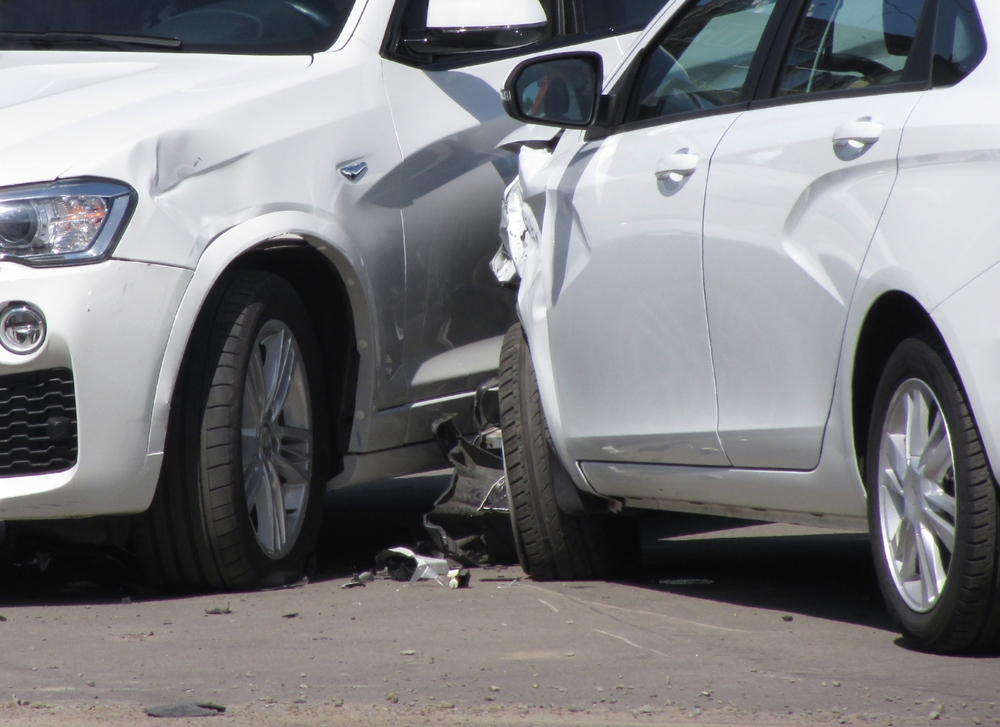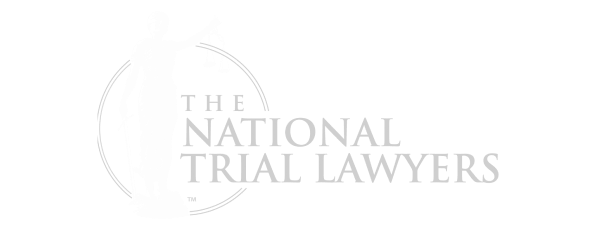
Side-impact collisions at Pittsburgh intersections hit fast and hard. One moment you’re confidently at the light; the next, your door caves in, your airbags deploy, and you find your name on a police report you never imagined.
At Tarasi & Tarasi P.C., our team represents injured drivers throughout Pittsburgh and Western Pennsylvania. With your recovery as our focus, we handle the legal side while you focus on healing.
If a careless driver t-boned you in Allegheny County, you’re not alone, and you’re not without options.
In this guide, I’ll explain, step by step, how you can protect your claim and pursue full compensation, how Pennsylvania’s auto insurance rules affect what you can recover, when you can sue, how fault is allocated under state law, and which deadlines could block your rights.
Why T-Bone Crashes Are So Serious
Broadside impacts happen when another driver fails to stop or yield or misjudges a turn. Unfortunately, they are among the most dangerous types of collisions. Because a vehicle’s side has less structural protection than the front or rear, the forces involved in a t-bone often cause serious injuries.
According to the 2024 PennDOT Crash Facts & Statistics report, Pennsylvania recorded 110,764 total crashes statewide, including more than 42,000 crashes at intersections. That means nearly four in ten collisions occurred at intersections, underscoring how dangerous these traffic points remain for drivers and passengers alike.
When another driver runs a red light, drifts into your lane on a left turn, or ignores a stop sign and hits you from the side, that driver’s negligence becomes the foundation of your claim.
At a Glance: Your Pittsburgh Intersection Crash Claim
If a negligent driver t-boned you at a Pittsburgh intersection or anywhere in Western Pennsylvania, here’s what matters:
- You may be entitled to seek compensation for your medical expenses, lost income, and pain and suffering.
- Pennsylvania follows a modified comparative negligence rule, meaning you can recover as long as you are 50 percent or less at fault. If you’re found 51 percent or more at fault, you cannot recover compensation.
- Whether you can seek non-economic damages (like pain and suffering) depends on your full tort or limited tort selection and whether any exceptions apply.
- Strict limitations apply. Most Pennsylvania personal injury lawsuits must be filed within two years of the crash date. If police did not respond to a “reportable” crash, you or your attorney must file Form AA-600 (Driver’s Accident Report) with PennDOT within five days.
- Evidence makes or breaks intersection cases. At Tarasi & Tarasi P.C., our attorneys gather traffic signal data, surveillance footage, event data recorder (EDR) downloads, and witness statements to connect the crash directly to your injuries.
What You Should Do Immediately After a T-Bone Collision
- Call 911 and get medical care right away. Even if you feel okay, side-impact forces can cause internal injuries or concussions that don’t show symptoms right away. Early documentation protects your health and your claim.
- Make sure the crash is properly reported. If police respond and file a formal report, you’re covered. If they don’t, Pennsylvania law requires an AA-600 form to be filed with PennDOT within five days, particularly when there’s an injury, death, or a vehicle that needs towing. Our team can assist you with that.
- Preserve evidence at the scene. If it’s safe to do so, take photos or video of the intersection, traffic signals, skid marks, debris, vehicle positions, and your visible injuries. Capture lane markings, sight lines, and any obstructed signage. Ask witnesses for their contact information, and don’t argue fault or speculate about speed or signal timing.
- Notify your own insurer promptly, but use caution when speaking with the at-fault driver’s insurance. It’s standard to report the crash to your own carrier, but you are not required to talk to the other driver’s adjuster. If you do, stick to basic facts and never provide a recorded statement before we’ve reviewed your case together.
- Contact a Pittsburgh car accident lawyer early. The sooner I’m involved, the stronger your position becomes. We can act quickly to secure surveillance footage, download EDR data, document signal timing, and inspect the intersection while the evidence is fresh. We handle the investigation and deal with insurers so you don’t have to.
How Fault Works in Pennsylvania Intersection Crashes
Pennsylvania law follows a modified comparative negligence rule. You can recover damages if your share of fault is 50 percent or less, but if you’re found 51 percent or more at fault, you cannot recover compensation.
That makes fault allocation one of the most critical issues in your claim. To establish the other driver’s liability, I gather and analyze evidence such as traffic signal phase timing, crash reconstruction findings, witness statements, visibility and lane geometry assessments, and intersection history data. My goal is to show clearly that the other driver failed to yield, ignored a red light, or made an unsafe left turn, and that their actions directly caused the side-impact collision and your injuries.
Understanding Insurance: No-Fault, Full Tort & Limited Tort
In Pennsylvania, every driver must carry Personal Injury Protection (PIP) coverage, which pays your medical bills regardless of fault. That being said, your ability to pursue additional damages against the at-fault driver depends on whether you selected full tort or limited tort coverage.
- Full tort coverage allows you to seek both economic and non-economic damages, including pain and suffering, regardless of injury severity.
- Limited tort coverage restricts recovery for non-economic damages unless your injuries meet specific legal thresholds, such as serious impairment of a bodily function or death. Exceptions apply when, for example, the at-fault driver was uninsured, intoxicated, or operating an out-of-state vehicle.
At Tarasi & Tarasi P.C., a Pittsburgh accident injury lawyer will review your policy’s declarations page to confirm your tort selection and evaluate whether any exceptions apply. Together with my team, I also examine your uninsured/underinsured motorist (UM/UIM) coverage, because if the driver who hit you lacks sufficient insurance, your own policy’s stacking or supplemental coverage may significantly increase the total compensation available.
What You Can Recover After a Not-at-Fault T-Bone Crash
Once liability is established and any tort-related hurdles are addressed, you may be eligible to recover:
- Medical expenses and future care costs
- Lost wages and loss of earning capacity
- Pain and suffering and loss of life’s pleasures
- Property damage and rental or loss-of-use costs
- Out-of-pocket expenses tied to your treatment, travel, and rehabilitation
In side-impact crashes, our team typically sees shoulder labral tears, rib or pelvic fractures, spinal injuries, and traumatic brain injuries. I work closely with your treating physicians and, when needed, independent experts, to document your functional limitations and future care needs. Insurers often try to minimize your injuries. My job is to build a complete, factual record of your losses.
Deadlines That Control Your Claim
- General statute of limitations: In most Pennsylvania personal injury lawsuits, you must file within two years of the crash date. Even one day late can bar your claim.
- Claims against government entities: If a municipal vehicle caused your crash or a public intersection’s design contributed to it, you must provide written notice to the agency within six months and comply with additional rules and damage caps.
- Driver’s Accident Report (AA-600): If police did not investigate a reportable collision, the driver or owner may need to file the AA-600 form with PennDOT within five days.
At Tarasi & Tarasi P.C., we monitor every deadline closely to ensure your demand package stays on schedule, negotiations proceed efficiently, and litigation is ready if needed.
How to Prove the Other Driver Was at Fault
In Pittsburgh t-bone cases, two stories often emerge: each driver claims the light was green, and each insists they had the right of way. My job is to resolve that conflict with objective evidence:
- Traffic signal timing and phase data from the City or PennDOT showing how long each phase lasted and whether protected turn arrows were active
- Event Data Recorder (EDR) downloads revealing speed, braking, throttle, and seat belt use seconds before impact
- High-resolution scene mapping and skid mark analysis to establish impact points and directions
- Surveillance video from nearby businesses, buses, or homes capturing approach speeds or signal colors
- Early witness statements, taken before memories fade
- Medical-causation opinions linking side-impact force vectors to your injuries
The goal is to clearly demonstrate that the other driver failed in their duty of care, that this failure caused the crash, and that your injuries directly resulted from it.
Dealing With Insurance Adjusters After a Pittsburgh T-Bone Crash
Insurance adjusters often follow predictable strategies in intersection crash claims:
- Shared blame: They may argue you entered the intersection too soon or misjudged the light. Under Pennsylvania’s comparative fault law, any percentage of fault they assign to you reduces your recovery.
- Limited tort: They may insist you can’t recover compensation for pain and suffering because you chose limited tort. I review your policy in detail and apply exceptions where appropriate.
- Soft-tissue minimization: They label serious side-impact injuries as “minor” when imaging appears limited. I counter that with therapy records, expert evaluations, and documentation of functional loss.
Never sign a blanket medical authorization or give a recorded statement to the other driver’s insurer before we’ve spoken. Even a small misstatement can seriously damage your claim.
A Typical Timeline for a T-Bone Car Accident Case
- Weeks 1 to 4: Secure police reports, file the AA-600 if required, notify all insurers, preserve video evidence, inspect the vehicles, and photograph the intersection’s signal heads and sight lines.
- Months 2 to 4: Build your liability case and monitor your medical progress. If you’re out of work, I gather pay stubs and employer letters, and I collaborate with your doctors to project future care needs.
- Months 4 to 8: Prepare and send a complete demand package once your condition stabilizes. If the insurer delays or undervalues your claim, our firm files suit to stay within the two-year statute and use discovery to secure signal and EDR data before it becomes unavailable.
Why Work With Tarasi & Tarasi P.C. on Your Car Accident Case
At Tarasi & Tarasi P.C., led by Elizabeth M. Tarasi Esq., our practice is built on experience, integrity, and results. From our downtown Pittsburgh office, we serve clients across Western Pennsylvania with the same dedication and professionalism that have defined our firm for decades.
Our team offers free consultations, and you pay no fee unless we recover compensation for you.
Here’s how our team helps Pittsburgh intersection crash victims:
- We initiate a full investigation right away to secure video and physical evidence before it disappears.
- We obtain and analyze Event Data Recorder (EDR) downloads and intersection signal timing records.
- When needed, we work with respected reconstruction and biomechanical experts to strengthen your case.
- We build your case around Pennsylvania’s comparative fault rules, clearly establishing liability and your rights.
- We document your treatment and long-term effects, negotiate from a position of strength, and, if settlement is not enough, we will file suit.
If an insurance adjuster suggests you share equal blame, we challenge that with facts. If a carrier misapplies limited-tort protections, we push back. If a deadline looms, our team keeps your claim moving.
Pittsburgh Specific Tips After a T-Bone Crash
- If your crash occurred at a signalized Pittsburgh intersection, request the 911 audio and CAD logs promptly. Our team can help obtain any available traffic camera footage, as many city systems overwrite data within days.
- Keep all medical bills, explanations of benefits (EOBs), and receipts. Your PIP coverage pays for treatment regardless of fault, but accurate documentation helps us recover deductibles and out-of-pocket costs from the at-fault insurer.
- Attend all follow-up appointments. Gaps in treatment are one of the first things adjusters cite when trying to minimize pain and suffering claims.
Contact Tarasi & Tarasi P.C. Today
If a careless driver t-boned you at a Pittsburgh intersection, you don’t have to take on the insurers by yourself. At Tarasi & Tarasi P.C., our Pittsburgh car accident lawyers are ready to act quickly on your behalf. Call 412-883-8904 or contact us online for a free consultation. There’s no fee unless we recover compensation for you.
To learn more, contact our office.
Disclaimer: The articles on this blog are for informational purposes only and are no substitute for legal advice or an attorney-client relationship. If you are seeking legal advice, please contact our firm directly.






